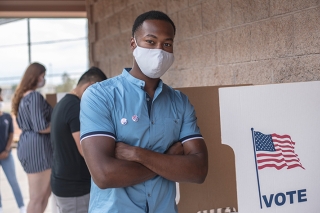How Does Paid Family Leave Compare to FMLA?

The Family Medical Leave Act (FMLA) was put in place to protect employees’ jobs when they need to take time off for family or medical reasons. With Paid Family Leave, employees in New York will soon be able to access that type of job security while protecting income. But don’t let the “paid” part fool you — the differences between these two programs go well beyond wages. Here’s a look at how Paid Family Leave and FMLA compare, and how they work together.
Purpose and Coverage
Both programs are focused on job protection, and both provide for time off for family reasons. Key differences include the definition of family members, and the fact that FMLA can be used for an employee's own injury or illness.
| FMLA | New York Paid Family Leave | |
|---|---|---|
| Paid time off | No | Yes |
| Bonding with a child | Yes | Yes |
| Caring for a seriously ill family member | Yes | Yes |
| Responding to needs related to a military family member's deployment, injury or illness | Yes | Yes |
| Recovering from one’s own injury or illness | Yes | No |
| Full job security: Employers must provide the same position or one comparable in wages or benefits. | Exception: Some top-salaried employees may be denied job restoration if the restoration (not the absence) will cause substantial economic injury to the employer. | Yes |
| Family members included: | ||
| Spouse | Yes | Yes |
| Domestic partner | No | Yes |
| Child under 18 | Yes | Yes |
| Domestic partner's child under 18 | No | Yes |
| Child 18 or older but incapable of self-care | Yes | Yes |
| “Child” includes biological, adoptive, step and foster | Yes | Yes |
| Parent | Yes | Yes |
| Parent-in-law | No | Yes |
| Grandparent | No | Yes |
| Grandchild | No | Yes |
| Next of kin | Yes, For military care-giving only | No |
Eligibility
Employees are eligible for the two programs after a waiting period, but Paid Family Leave kicks in sooner for both full-time and part-time employees. When an event qualifies for both FMLA and Paid Family Leave and an employee has met the qualification periods for both, the programs run concurrently.
| FMLA | New York Paid Family Leave | |
|---|---|---|
| Who's covered | Employees working at any organization in the United States with 50+ employees | Employees working in New York at a Covered Employer (all employers subject to New York Disability Benefits Law) |
| Who's eligible | Those employed at the business for 12 consecutive months, working at least 1,250 hours in the 12 months preceding leave | Full-time: Those working 20+ hours/week, employed by the business for at least 26 consecutive weeks Part-time: Those working less than 20 hours/week, employed by the business for at least 175 days |
Benefits
The amount of time available under each program differs for the next few years, until Paid Family Leave is fully phased in. Note, too, that there are slight differences in the reference time frame. Paid Family Leave allowances are based on a consecutive 52-week period. FMLA allowances are based on a flexible definition of 12 months.
| FMLA | New York Paid Family Leave | |
|---|---|---|
| Time provided | 12 weeks per 12-month period For bonding and care, some flexibility is allowed in the employer's definition of “12-month period.” It may be a calendar year, any consecutive 12 months, etc. | 8 weeks per consecutive 52-week period in 2018, gradually increasing to 12 weeks in 2021 |
| Minimum leave increment | 15 minutes | 1 day |
More Questions — and Answers
We know you'll have more questions – and we'll keep providing answers. Check back often for more resources and details. Follow The Standard on Facebook, LinkedIn and Twitter with the hashtag #PaidFamilyLeave, and subscribe to this blog's RSS feed to receive updated content as new information becomes available. For more details, visit: https://www.ny.gov/programs/new-york-state-paid-family-leave
More About Legislative Activity








